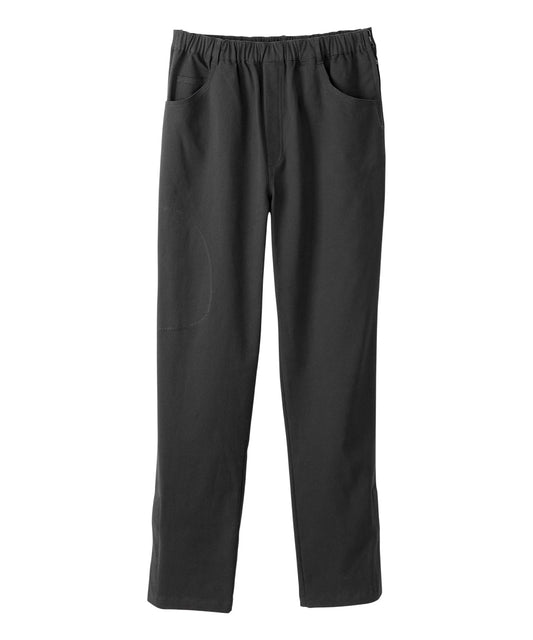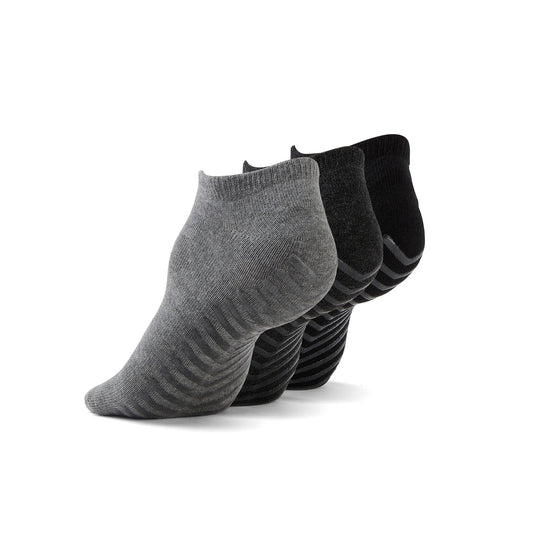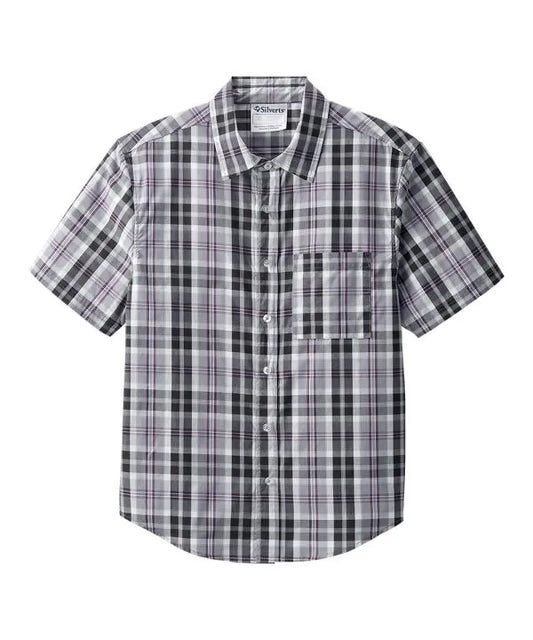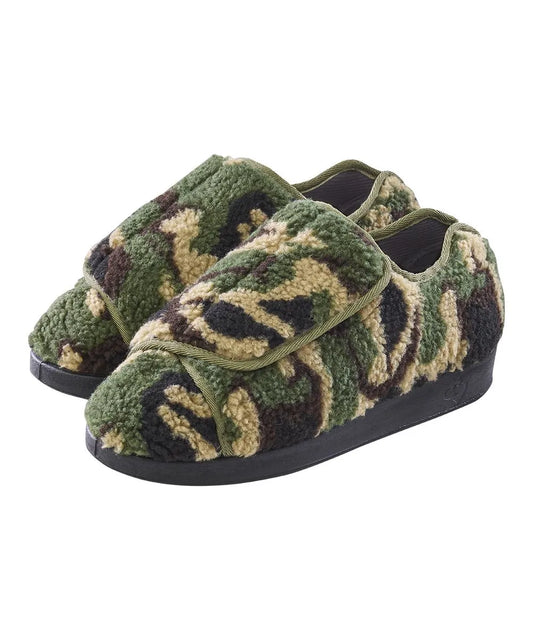Photo by: Heather Ford
Written by: Zuhair Augla
Introduction
Having cerebral palsy often means facing everyday difficulties, and this is particularly so in the area of apparel. Motor control problems, muscle spasticity, and postural deviations are some challenges people with cerebral palsy may face. Adaptive apparel has emerged as a game-changing solution, pairing innovative design with practical sensibility. Not only does this new model make dressing and undressing more manageable, but it also promotes overall comfort and mobility. In this article, we discuss how adaptive clothing designs ameliorate motor difficulties. The design features that promote accessibility and comfort, ways in which the clothing enables improved posture and mobility, and the reasons why the application of inclusive design principles within adaptive wear means so much to the cerebral palsy community.
How Do Adaptive Clothing Designs Cater to the Motor Challenges Faced by Individuals with Cerebral Palsy?
Individuals with cerebral palsy will likely have difficulty with motor function and muscle coordination. This makes trying to manage the complexities of regular clothing a challenge, as regular clothing is likely to depend on small buttons, tight seams, and stiff structure. Adaptive clothing has been specifically created to overcome these challenges, with an adaptive design that can accommodate varying levels of motor impairment. Clothes are now made with features such as larger, easy-to-manage closures and simpler fastenings that don't involve tricky finger movements. Instead of struggling with multiple buttons, for example, most adaptive tops feature magnetic fasteners that allow for quick and simple closure with minimal effort.  This Men's jacket with magnetic closures would be the perfect substitute for the traditional buttons. It is adaptive but doesn't lose focus of its fashionable nature and it can be found on the JuneAdaptive website.
This Men's jacket with magnetic closures would be the perfect substitute for the traditional buttons. It is adaptive but doesn't lose focus of its fashionable nature and it can be found on the JuneAdaptive website.
Furthermore, designers have redesigned the entire garment construction to reduce bending, stretching, or overarm movement. Shirts and jackets can be designed with open-backed or broader neck constructions so individuals can dress themselves without raising their arms too high or twisting their bodies.  A possible option for a shirt with a back overlap could be the following: it is soft and designed so that you can wear it without raising your arms at all. Trousers and skirts can be routinely designed with elasticated waistbands and side-opening designs that work over a range of motion so individuals with the most severe motor impairment can dress themselves.
A possible option for a shirt with a back overlap could be the following: it is soft and designed so that you can wear it without raising your arms at all. Trousers and skirts can be routinely designed with elasticated waistbands and side-opening designs that work over a range of motion so individuals with the most severe motor impairment can dress themselves.
What Features Make Adaptive Garments More Accessible and Comfortable for Those with Cerebral Palsy?
Adaptive cerebral palsy clothing is all about comfort and ease of use, and a few key features set these clothes apart from the rest. First, one big thing is simply how easy they are to fasten. You know, regular fasteners such as small buttons or standard zippers can be challenging for those who don't have good dexterity. Adaptive clothing is typically equipped with these nifty magnetic closures or Velcro that make putting on and taking off clothes much more manageable. Employing such closures makes it faster to get dressed and reduces the hassle and effort associated with the conventional methods.
These materials are ultra-lightweight, friendly, and soft to the touch. This is a top priority for individuals who can't handle rough textures or are uncomfortable after being in harsh materials for a while. Also, incorporating stretchable, flexible materials into the design allows the apparel to move with your body, meaning that they shift when your muscles do and won't restrict you when you need to move around. Designers also prioritize sleek construction and minimal detailing to optimize comfort. Seams can sometimes cause pressure points or chafing, so adaptive clothing is often constructed with flat or taped seams to prevent skin irritation. Pocket placement, adjustable waistbands, and strategically located stretch panels are also considered to help achieve a more comfortable and accessible fit. These features allow the clothing to embrace the wearer's body instead of the other way around, which is especially helpful for those with cerebral palsy who can have different physical needs at various times of the day.
Other than functional operations, adaptive wear also pays attention to aesthetics to the extent that function does not compromise fashion. Today's adaptive clothing offers vast options in colour, print, and contemporary silhouette so individuals can express themselves freely according to their personal style. By combining accessibility and appearance, the designers render the users comfortable and confident in wearing what they choose, reaffirming the truth that adaptive clothing need not be merely functional but stylish as well.
In What Ways Does Adaptive Clothing Support Improved Posture and Mobility for Individuals with Cerebral Palsy?
For most individuals with cerebral palsy, the struggle to maintain proper posture and mobility is constant. Proper attire can make an enormous difference in these areas by incorporating structural components that encourage healthy alignment and freedom of movement. Adaptive wear is now created with supportive components that allow effortless mobility and promote improved posture.
For instance, adaptive tops incorporate support panels within the garment's construction that gently pads the back and shoulders, preventing slouching and promoting upright positioning. Such features are especially beneficial for individuals struggling to maintain proper positioning because of muscle imbalance or weakness. Moreover, adaptive lower-body apparel frequently has reinforced waistbands and concealed elastic supports that stabilize the hips and lower back. Such integrated support benefits wheelchair users or individuals who remain seated for extended durations, as it aids in pressure distribution and prevents discomfort or injury.
Also, adaptive apparel seeks to limit restrictions on mobility so that individuals can conduct everyday activities with more liberty. Apparel that is too stiff or tight can restrict mobility, but adaptive apparel concentrates on flexibility and comfort of movement. With stretchable materials that conform to the body, such attire ensures that natural movement is not constricted. This is important for actions that call for a full range of motion, for example, reaching, bending, or walking. As apparel conforms to the body, it allows for physical activities without incorporating extra barriers, ultimately optimizing overall mobility.
When individuals with cerebral palsy dress in comfortable and supportive clothing, they tend to feel a surge of self-confidence. This confidence encourages them to be more physically active, enhancing their mobility and general well-being. Adaptive clothing, then, not only assists in keeping the body in good posture but also inculcates a positive mindset that encourages an active lifestyle.
How Can Inclusive Design Principles Be Integrated into Adaptive Apparel to Better Serve the Needs of the Cerebral Palsy Community?
At the core of adaptive clothing lies the fundamental principle of inclusivity, a dedication to creating clothing that is accessible, comfortable, and empowering for all, irrespective of their physical capabilities. Applying inclusive design principles to adaptive clothing for individuals with cerebral palsy requires a concerted effort that takes into account the varied needs and experiences within the community. Designers, engineers, and end users must work together to develop clothing that solves specific problems and honours each individual's uniqueness.
Inclusive design starts with active engagement and contributions from cerebral palsy individuals. By engaging the community in the design process, manufacturers can learn about the practical challenges that users encounter daily. Such input is invaluable in shaping features like adjustable closures, flexible materials, and support frameworks, all intuitively crafted to enhance the user experience. The aim is to create apparel that reacts to functional requirements and addresses personal style and identity. If individuals believe their suggestions are appreciated and represented in the items they utilize, they will be far more prone to wear the apparel confidently and proudly.
Another important aspect of inclusive design is its flexibility. Adaptive apparel must be versatile to address a broad continuum of needs, from daily casual wear to more specialized activities. This means creating garments readily adaptable to meet shifting mobility levels or changes in the wearer's status over time. Think adjustable features such as drawstrings, elastic panels, and removable reinforcement; such details provide a single garment with the functionality of many, with the potential to adapt as the wearer's needs change. The design flexibility prolongs the garment's life and empowers the wearer, providing a dynamic solution that adapts to their ever-altering circumstances.  These recovery pants are perfect for flexibility as they contain drawstrings and snap open for quick and easy access to the waist, hips, and legs.
These recovery pants are perfect for flexibility as they contain drawstrings and snap open for quick and easy access to the waist, hips, and legs.
Another core element of inclusive design is aesthetic appeal. Adapted clothing shouldn't provide a clinical or strictly functional appearance but rather one that is contemporary and stylish. It should permit individuals with cerebral palsy to exert their personal flair. By incorporating contemporary silhouettes, mesmerizing colours, and trendy details, designers can craft apparel that flatters the wearer and serves their needs. This strategy helps dispel the stigma that tends to surround adaptive apparel and renders it an appealing and sought-after option for daily wear.
Technology is increasingly helping to create adaptive clothing using inclusive design. New developments in textile technology, 3D printing, and bright colours are opening up options for personalization and customization. These innovations allow designers to make garments that fit better and move more naturally with the body. As adaptive clothing improves, combining technology with inclusive design will lead to even more creative solutions that help individuals with cerebral palsy live active and meaningful lives.
Conclusion
Garments specifically manufactured for the cerebral palsy society have entered the realm of advancements in all accessible and inclusive fashion. The performance of these models by turning the difficulty of getting dressed into an experience of confidence is the focus of the problem of the motor skills that are typically associated with cerebral palsy. The features deliberately designed for these such as magnetic closures, stretchable fabrics, changeable elements, and support that is built-in, are especially useful to individuals with cerebral palsy, thus, it is configured to their specifics. Additionally, the use of adaptive clothing provides a way for the body to feel more relaxed and secure in movement, hence, the individual becomes freer and enhances self-confidence.
Incorporating inclusive design ideas into adaptive clothing is a way of enhancing the value of such clothing. The designers who can closely cooperate with the cerebral palsy community can create clothing that serves a functional purpose and reflects the wearer's personal style. The main ideas of multifunctional, personalization and the careful implementation of the latest technologies are all indispensable for the production of adaptive clothing that fits a particular person's constantly changing demands. Fashion adaptable to the environment is not just a type of clothing; it is a powerful tool for gymnastics, self-representation, and improving life quality.
To learn more about adaptive wear, check out the JuneAdaptive website https://www.juneadaptive.com















